This post is also available in: Spanish
Children are among the groups most susceptible to the risks associated with development projects financed by the World Bank. The detrimental effects of poverty and deprivation are magnified in children because a lack of sufficient nutrition, health care, access to clean drinking water, and educational opportunities early in a child’s life have impacts that linger for years and prevent a child from reaching his or her full potential.
As the United Nations has previously noted “the child, by reason of his physical and mental immaturity, needs special safeguards and care.” It is thus crucial that the World Bank take steps to not only invest in development programs that benefit children but also to enact policies to ensure that World Bank funded projects do not have a detrimental impact on the rights and well-being of children.
You can find kid-friendly information on the World Bank and World Bank Safeguards at our BIC Kids Page.
Why is there a need for a child rights focus in World Bank Safeguards?
More than 30 percent of children under 18 in developing countries – about 600 million people – live in “extreme poverty”, defined as living on less than $1.25 a day. According to the World Bank’s own figures, 8 million children under the age of 5 die each year from preventable causes.
As UNICEF noted in the aptly named report, Poverty Reduction Begins with Children, “Poverty causes lifelong damage to children’s minds and bodies, turning them into adults who perpetuate the cycle of poverty by transmitting it to their children. This is why poverty reduction must begin with the protection and realization of the human rights of children. Investments in children are the best guarantee for achieving equitable and sustainable human development.”
The World Bank has similarly recognized the importance of protecting and supporting children, stating that “Since capacities built during childhood and the youth period largely determine adult outcomes, effective investments in young people provide important returns not only to the individual and the community, but to society as a whole.”
However, this recognition has not translated into action to prevent World Bank projects from having a detrimental impact on children and their future prospects. Bank projects continue to have the potential to employ child labor, resettle children far from educational opportunities, damage parents’ ability to earn a living resulting in malnutrition and lack of access to health care for children, and result in the exploitation or trafficking of children.n and lack of access to health care for children, and result in the exploitation or trafficking of children.
What is currently in the Bank’s Safeguards regarding the rights of the child?
Current World Bank Safeguard policies on Involuntary Resettlement and Indigenous People recognize the heightened protection needs of children by listing them among “vulnerable groups” and those with “special needs” but stop short of mandating that programs and projects take any particular measures to prevent harm to children and protect their rights. Current safeguards also do not prohibit the use of child labor in Bank funded projects.
In contrast the International Finance Corporation, the arm of the World Bank that provides loans and investments to private companies doing business in developing countries, performance standards which “clients’ responsibilities for managing their environmental and social risks” are more explicit about the rights of the child. It includes the following provision:
“The client will not employ children in any manner that is economically exploitative, or is likely to be hazardous or to interfere with the child’s education, or to be harmful to the child’s health or physical, mental, spiritual, moral, or social development. The client will identify the presence of all persons under the age of 18. Where national laws have provisions for the employment of minors, the client will follow those laws applicable to the client. Children under the age of 18 will not be employed in hazardous work. All work of persons under the age of 18 will be subject to an appropriate risk assessment and regular monitoring of health, working conditions, and hours of work.”
What should a child rights focus in World Bank Safeguards look like?
The Bank should require that environmental and social impact assessments explicitly assess the project’s expected impacts, both direct and indirect, on children. In particular the potential that infrastructure and extractive projects may lead to an influx of workers into an area, putting children at risk of sexual violence, exploitation or trafficking. Where such a risk is found, steps to mitigate this risk, for example by partnering with local NGOs to conduct workshops on preventing violence against children, must be taken.
Safeguards should prohibit the use of child labour in Bank funded projects in line with International Labour Organization (ILO) Convention 138 on the minimum age for admission to employment and work and ILO Convention 182 on the worst forms of child labour. These conventions prohibit the involvement of children younger than 18 in hazardous work and those children younger than 15, 14 in some developing countries, in all work.
Safeguards should also address the risks to children when projects result in involuntary resettlement. The policies must make sure that children who are displaced do not lose access to education services, including inclusive education for children with disabilities, and must also ensure that the displacement of families does not negatively impact parents’ abilities to earn a living that is sufficient to provide proper nutrition and healthcare for children.
For more information on how children think the safeguards should protect their rights, see BIC’s children’s consultation page.
What do children think about the way the World Bank Safeguards may impact their lives?
Between August 14 and October 5 2013 the Bank Information Center held a series of seven children’s consultations in six countries on the World Bank safeguards. The countries in which consultations have been carried out included: Peru, Yemen, India, Cambodia and Uganda. The World Bank reviewed its social and environmental policy standards, and engaged in a consultative process to seek input from multiple stakeholders on potential changes to the safeguard policies. However, it has made no effort to seek out the voices of children in this process. Thus, BIC, in cooperation with children’s rights organizations around the world, initiated a consultation process to solicit input from children on the World Bank safeguards. In each consultation the children shared concerns about issues facing their communities and made recommendations for ways the World Bank could prevent projects from negatively impacting children. These included:
- Conducting child impact assessments before beginning projects
- Consulting with children at all stages of the project process
- Requiring that projects respect human rights and children’s rights
- Ensuring that when families are displaced, relocation sites have sufficient access to schools and health centers
- Shifting from a reliance on nonrenewable energy to a focus on renewable energy
- Preventing deforestation
- Better monitoring a country’s implementation of a project to ensure that policies are complied with
For more information on each of these consultations and individual recommendations please see our consultation page.
What does the latest draft of the updated Safeguards say about children?
The draft mentions children specifically in a few key policies, including ESS1 Assessment and Management of Environmental and Social Risks and Impacts, ESS2 Labor and Working Conditions, and ESS10 Information Disclosure and Stakeholder Engagement. On the other hand, ESS4 Community Health and Safety and ESS5 Land Acquisition, Restrictions on Land Use and Involuntary Resettlement both contain references to the need to pay particular attention to “vulnerable” groups, but do not include specific references to children and do not define “vulnerable.”
Under ESS1, the borrower is required to look at particular impacts on vulnerable groups, including those vulnerable because of their age, as part of the social assessment. However, it is not clear whether unique impacts on children must be assessed separately from impacts on other “disadvantaged or vulnerable groups.” According to the policy, “disadvantaged or vulnerable” groups include children, persons with disabilities, and indigenous peoples, among others.
The labor policy, ESS2, is a new and welcome addition to the safeguards suite. This policy has a section on child labor and addresses hazardous labor and minimum age for work. However, the policy does not address the issue of child labor in supply chains. In addition, the section on minimum age for work sets the minimum age based upon national law. Thus, if national law is not consistent with ILO convention 138 then the Bank could theoretically allow young children to work on Bank projects.
ESS10, another new policy under the proposed Framework, includes several references to the need to engage all stakeholders, regardless of age, in the process. It also contains many references to the need to ensure that “vulnerable groups” (defined to include children) are included in the process. However, there is no guidance for borrowers on how to consult with children.
The World Bank has solicited feedback on its draft policies during the Phase 2 consultation period, which ended on March 1. See BIC’s full submission here to find out how we think the draft policies can be improved upon in order to better protect the rights of children.
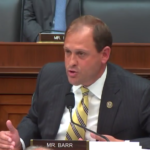 House Financial Services Committee Passes World Bank Accountability Act of 2017
House Financial Services Committee Passes World Bank Accountability Act of 2017This post is also available in: SpanishThe House Financial Services Committee passed the World Bank Accountability Act of 2017 today, authorizing U.S. participation in IDA, the World Bank’s fund for t...
 World Bank Works to Address GBV related Ramifications of Uganda Transport Sector Development Project
World Bank Works to Address GBV related Ramifications of Uganda Transport Sector Development ProjectThis post is also available in: Spanish In response to the harm caused by the World Bank funded Uganda Transport Sector Development Project (UTSDP), including the sexual exploitation of teenage girls,...
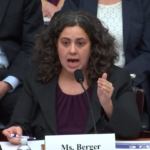 BIC’s Elana Berger Testifies Before House Financial Services Subcommittee
BIC’s Elana Berger Testifies Before House Financial Services SubcommitteeThis post is also available in: SpanishOn March 22, BIC’s Elana Berger testified before the House Financial Services Committee subcommittee on Monetary Policy and Trade. Berger’s testimony at the hear...
 BIC to Testify at Hearing with the House Financial Services Committee on “Examining Results and Accountability at the World Bank”
BIC to Testify at Hearing with the House Financial Services Committee on “Examining Results and Accountability at the World Bank”This post is also available in: SpanishMarch 2017 Elana Berger, BIC’s Social Inclusion and Accountability Manager, will testify before the Monetary Policy and Trade Subcommittee of the House Financial...
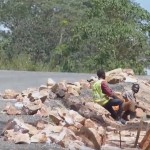 World Bank Board Approves Action Plan for Uganda Transport Sector Development Project
World Bank Board Approves Action Plan for Uganda Transport Sector Development ProjectThis post is also available in: SpanishOn November 22 the World Bank Board of Directors approved a Management Action Plan intended to address the Inspection Panel’s investigation of the Uganda T...
 October 2016 World Bank/IMF Annual General Meetings: Issues to Watch
October 2016 World Bank/IMF Annual General Meetings: Issues to WatchThis post is also available in: Spanish The Annual General Meetings (AGM)* of the World Bank and IMF do not just serve as an opportunity for central bankers, finance ministers, and private sector exe...
 In Response to Project Failures, World Bank Announces New Gender-Based Violence Task Force
In Response to Project Failures, World Bank Announces New Gender-Based Violence Task ForceThis post is also available in: SpanishIn light of “multiple failures” by the World Bank in monitoring and supervising the Uganda Transport Sector Development Project, the World Bank Group announced t...
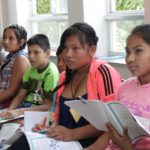 World Bank forgoes transparency, participation in addressing vulnerable groups
World Bank forgoes transparency, participation in addressing vulnerable groupsThis post is also available in: SpanishChildren in Peru attend BIC workshop on World Bank safeguards / BIC 2015 In August 2015 the World Bank flagged as one of the four goals of the safeguards review...
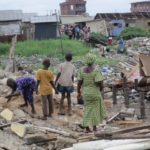 Press Release: IDA Replenishment Negotiations and World Bank Safeguards
Press Release: IDA Replenishment Negotiations and World Bank SafeguardsThis post is also available in: SpanishAs World Bank member governments gather in Myanmar to discuss their contributions to the International Development Association, the Bank’s fund for the poorest c...
 Learn more: The Human Faces of World Bank Failures
Learn more: The Human Faces of World Bank FailuresThis post is also available in: SpanishInternational development finance is intended to alleviate poverty by sparking inclusive growth. But without strong protections for local communities, it can exc...
 The Impact of the World Bank Funded Kamwenge-Kabarole Road Construction Project on Children The Bank Information Center, in partnership with Joy for Children in Uganda, prepared this case study on the impacts on children associated with the Kamwenge-Kabarole Road project. The study found that, while roads and other investments in infrastructure can create and expand economic opportunities for people in the area, they can also lead to severe negative impacts on children, particularly girls.
The Impact of the World Bank Funded Kamwenge-Kabarole Road Construction Project on Children The Bank Information Center, in partnership with Joy for Children in Uganda, prepared this case study on the impacts on children associated with the Kamwenge-Kabarole Road project. The study found that, while roads and other investments in infrastructure can create and expand economic opportunities for people in the area, they can also lead to severe negative impacts on children, particularly girls.
 The CGPL Power Plant ‘Tata Mundra’, An Explorative Study of the Impact on Children The Bank Information Center, working with Indian researcher Prasad Chacko, prepared this case study on the negative impacts of the Tata Mundra power plant, funded in part by the International Finance Corporation, on children’s health, safety, and access to educational opportunities.
The CGPL Power Plant ‘Tata Mundra’, An Explorative Study of the Impact on Children The Bank Information Center, working with Indian researcher Prasad Chacko, prepared this case study on the negative impacts of the Tata Mundra power plant, funded in part by the International Finance Corporation, on children’s health, safety, and access to educational opportunities.
 The Impact of Involuntary Resettlement on Children: A Case Study of the International Development Association Funded Bujagali Hydro-Power Dam: The Bank Information Center submitted a case study prepared by Phiona Nampungu to the World Bank’s Safeguards review team regarding the negative impact of resettlement resulting from the International Development Association funded Bujagali hydropower project on affected children.
The Impact of Involuntary Resettlement on Children: A Case Study of the International Development Association Funded Bujagali Hydro-Power Dam: The Bank Information Center submitted a case study prepared by Phiona Nampungu to the World Bank’s Safeguards review team regarding the negative impact of resettlement resulting from the International Development Association funded Bujagali hydropower project on affected children.
 The Need for Child Impact Assessments: A Case Study of the International Development Association Funded Uzbekistan Rural Enterprise Support Project-Phase II: The Bank Information Center, in partnership with Ezgulik, submitted a case study to the World Bank’s Safeguards review team regarding the need for safeguard policies to include a requirement that assessments specifically assess the unique risks of the project for children as well as a labor safeguard in line with core ILO standards. For more on this study, visit our project page on the subject.
The Need for Child Impact Assessments: A Case Study of the International Development Association Funded Uzbekistan Rural Enterprise Support Project-Phase II: The Bank Information Center, in partnership with Ezgulik, submitted a case study to the World Bank’s Safeguards review team regarding the need for safeguard policies to include a requirement that assessments specifically assess the unique risks of the project for children as well as a labor safeguard in line with core ILO standards. For more on this study, visit our project page on the subject.
 Impacts of Urban Resettlement on Children: A Case Study on the Mumbai Urban Transport Project, funded in part by the International Development Association: The Bank Information Center, working with Indian researcher Simpreet Singh, prepared this case study on the negative impacts of resettlement resulting from the Mumbai Urban Transport Project on children’s health, safety, and access to educational opportunities.
Impacts of Urban Resettlement on Children: A Case Study on the Mumbai Urban Transport Project, funded in part by the International Development Association: The Bank Information Center, working with Indian researcher Simpreet Singh, prepared this case study on the negative impacts of resettlement resulting from the Mumbai Urban Transport Project on children’s health, safety, and access to educational opportunities.
 Failing to Assess Risks to Children: A Case Study on the Second National Water Development Project in Malawi, funded in part by the International Development Association: The Bank Information Center, in partnership with Citizens for Justice, prepared this case study on the significant risks to children associated with a component of the SNWDP that involved the installation of prepaid water meters in Mzuzu, Malawi.
Failing to Assess Risks to Children: A Case Study on the Second National Water Development Project in Malawi, funded in part by the International Development Association: The Bank Information Center, in partnership with Citizens for Justice, prepared this case study on the significant risks to children associated with a component of the SNWDP that involved the installation of prepaid water meters in Mzuzu, Malawi.
The World Bank does not currently have policies in place for consulting with children. Therefore these critical voices are almost always left out of discussions with the general public on projects and policies that affect the lives of children. BIC is seeking to change this, and is encouraging the Bank to adopt policies and develop guidance on consulting with children.
For more information on BIC’s efforts to ensure children’s voices are included in the World Bank’s safeguards review, visit BIC’s Children’s Consultation Page.
Kid-friendly information on the World Bank and World Bank Safeguards: BIC’s Kids Page
BIC Documents
Child Rights and the Country Partnership FrameworkChild Rights and World Bank Safeguards Also Available in Spanish/en Español
BIC’s Children’s Consultations on World Bank Safeguards
CSO Submissions to World Bank Safeguards Review
BIC’s Second Round Submission to World Bank Safeguards ReviewCSOs call on the World Bank to address the needs of children in safeguard policies
CSOs Comment on Provisions Related to Child Protection in Safeguard Draft
World Bank Pages
World Bank’s Safeguards PageWorld Bank Safeguards Consultation page
Integrating a Child Focus into Poverty and Social Impact Analysis, UNICEF and the World Bank, September 2011
World Bank Children and Youth Page
Relevant Human Rights Treaties
Convention on the Rights of the ChildOptional Protocol on the sale of children, child prostitution and child pornography
ILO Conventions on Child Labor:
Child Rights Newsletter Archive
Child Rights Newsletter April 2015Child Rights Newsletter September 2014
Child Rights Newsletter February 2014
Child Rights Program Manager
+1 (202) 624-0634
eberger@bicusa.org Jolie Schwarz
Child Rights Program Associate
+1 (202) 624-0621
jschwarz@bicusa.org Phiona Nampungu
Child Rights Consultant
Based in Kampala, Uganda
+256 712 555 107
pnampungu@bicusa.org



